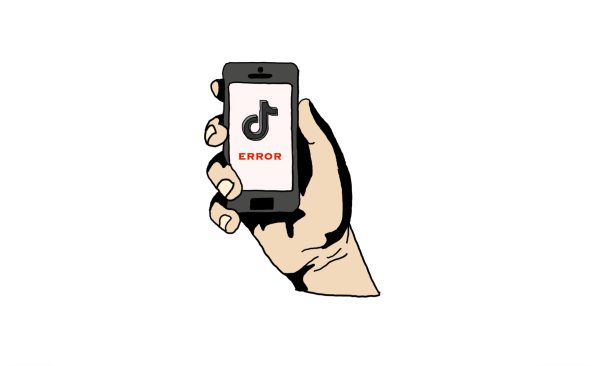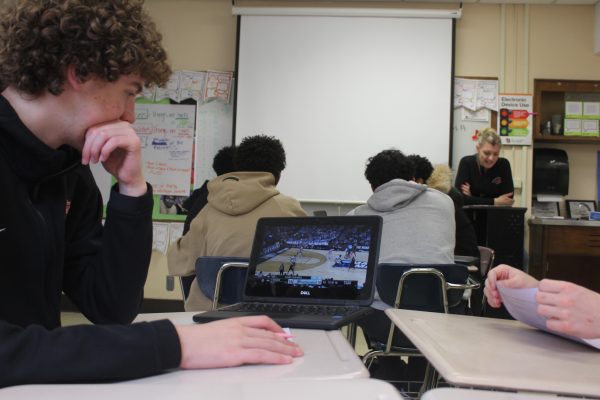Point/Counterpoint: “Clicktivism” incites debate among activists
May 15, 2013
People around the globe can now bring mass awareness to an issue and create events with ease. Popularly known as “clicktivism,” the use of the Internet and social medias has become the new tool of activists. However, controversy exists among traditional activists as to whether this new type activism is effective in bringing about real change.
The use of social media is the next step for activists
Natalie Vig
With increased use of social media, clicktivism is a natural way to share beliefs with friends.
Utilizing clicktivism as a means of protest is a simple way to connect to others and unite behind a cause.
One example is the recent emergence of the popular #prayforBoston on Twitter. The use of this hashtag created a sense of community for the city of Boston in the aftermath of the Boston Marathon bombings. This truly embodies the prevalence of one united nation as people set aside their differences to empathize with the victims.
Another example is the red and white 13 symbol for Benilde-St. Margaret’s junior Jack Jablonski when he injured his back during a hockey game that left him paralyzed last year. His Facebook page received more than 37,000 likes and thousands of people changed their profile pictures to support him. Without this attention, Jablonski’s incident may have been overlooked by the media and he wouldn’t be the inspiration to many he is today.
Additionally, in late 2011, the Stop Online Piracy Act (SOPA) and the Protect Intellectual Property Act (PIPA) were introduced to the House and Senate. These bills were created to protect authors and artists from illegal piracy through the use of the internet but the terms used were too general and would severely limit the use of the Internet.
Consequently, 150,000 websites, including Reddit and Wikipedia, participated in a “blackout” in which they censored their websites in a way the bills would. The blacked out Wikipedia home page was viewed 17 billion times, compared to the 4.5 billion views the previous day according to a statement released by Wikipedia. Without this widespread display of dislike, SOPA and PIPA may have been overlooked by the media, and we would be looking at a different Internet.
Overall, clicktivism can be a useful tool for spreading the opinion of the masses. As it becomes more widespread, it should be embraced and utilized to its fullest extent to educate and unite people for causes they are passionate about.
The world’s problems will not be solved by just a few clicks
Ori Etzion
At first glance, clicktivism shows great potential for activists, but as with any new change, the public must be wary.
Clicktivism asks less of supporters and focuses on making participants feel good about supporting a cause, rather than on accomplishing something productive.
Beginning in late March, amid the oral arguments for two Supreme Court cases, the Human Rights Campaign asked its supporters to share its red equals sign logo on Facebook to show support for same-sex marriage.
The Facebook Data Science Team reported a 120 percent increase in profile picture updates, and the logo was shared more than 70,000 times directly from the Human Rights Campaign page alone.
It is evident the campaign’s goal to show support was met, but this does little to institute progress toward marriage equality. The Supreme Court Justices do not check whether enough people have changed their profile pictures before making a decision on cases; they base their decisions on other factors.
Another example of clicktivism was the Kony 2012 short film created by Invisible Children, Inc. According to the online video marketing company Visible Measures, the Kony 2012 film needed only six days to achieve 100 million views. For such an impressive achievement, some would expect the capture of the alleged war criminal Joseph Kony to occur by 2012, as the campaign was aimed for.
The problem with this video is that it oversimplifies the issue and aims to market the idea that posting on Facebook and buying wristbands and T-shirts will equate to fighting a revolution. A 20-year-old problem in Uganda will not disappear if activists focus on only popularizing Kony as the super-villain of the 21st century.
Spreading awareness on the chance someone else will bring about change should not be classified as activism. If people want to be real activists, they should do so in public, not sitting behind a computer screen, and stand firmly for what they believe in, even if it is not trending on Twitter.












